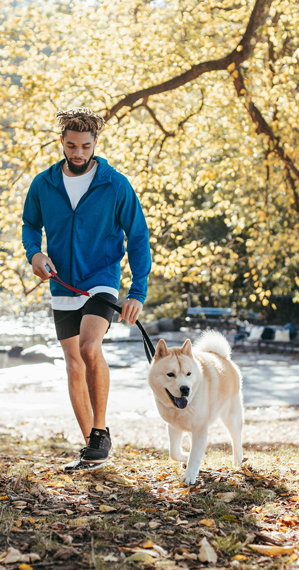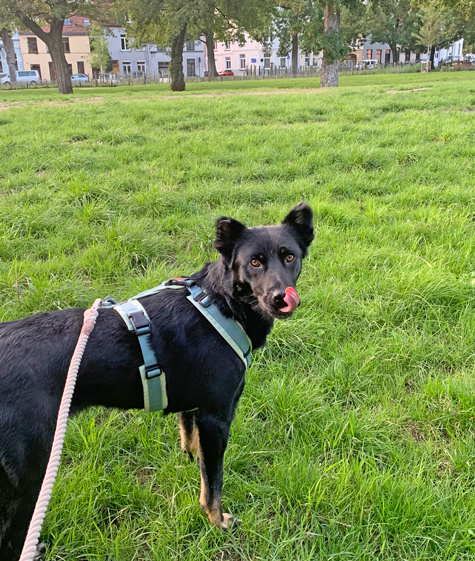Safe Dog Walking: tips every dog parent should know
Walks are more than just bathroom breaks, they’re quality time, mental stimulation, and your dog’s chance to explore the world. But let’s face it: not every walk goes smoothly. From surprise encounters with off-lead dogs to tangled leads and overstimulated pups, a casual stroll can quickly turn stressful.
The good news? A few smart habits can go a long way in making walks safer and more enjoyable for both you and your dog. Here are eight easy tips to help you feel confident every time you clip on the lead.

1. Know your dog’s comfort zone
Some dogs love greeting every human and pooch they see. Others… not so much. Paying attention to your dog’s body language during walks is key. Look for signs like tucked-in tails, stiff posture, or constant horizon scanning—they may be telling you they’re overwhelmed.
👉 Respect your dog’s boundaries. Not every walk needs to be a social hour and that’s ok.
2. Keep your dog on a lead
Even the best-trained dogs can get startled or distracted. In most public spaces, especially near roads or unfamiliar dogs, it’s safest to keep your dog on a lead.
If you do use off-lead areas, make sure your recall is rock solid and that the environment is safe and calm.
👉 Many dogs feel uncomfortable when approached by off-lead dogs, especially if they can’t choose to walk away.
3. Watch for off-lead dogs
One of the most common stressors on walks is being approached by an off-lead dog while yours is on a lead. This can make your pup feel trapped and reactive, even if they’re usually friendly.
If you see an off-lead dog approaching and you’re unsure of their intentions, calmly create distance. It’s ok to call out to the other owner and ask them to leash their dog if needed.
👉 You’re your dog’s voice and advocate.
4. Use the right gear
Comfort and control are everything on a walk. Make sure your dog’s harness or collar fits properly (not too tight, not too loose) and that your lead gives you enough control without restricting movement.
A harness with a front clip can help if your dog tends to pull, and reflective or brightly coloured gear is great for visibility, especially during early morning or evening walks

5. Choose your route wisely
Not all walking routes are created equal. If your dog is nervous or reactive, busy parks or high-traffic paths might not be the best choice. Instead, opt for quieter side streets, wide open fields, or early-morning strolls when things are calmer.
6. Stay alert and stay off your phone
Scrolling through your feed while walking might be tempting, but staying present helps you spot potential triggers before they become problems. Whether it’s another dog, a cyclist, or something tasty (and questionable) on the pavement, your attention can help you redirect your pup and prevent accidents.
👉 Plus, your dog will love having your full attention!

7. Carry walk essentials
It’s always better to be overprepared than caught off guard. Here’s a quick checklist to pack before you head out the door:
- Poo bags (always!)
- Water and a collapsible bowl for longer walks
- High-value treats for training or distraction
- A towel if it’s muddy or rainy
- Your phone, just in case
👉These little extras make a big difference, especially if you need to distract, redirect, or reward good behaviour.
8. End on a good note
Walks are all about positive experiences. Whether your dog spent the whole time sniffing or nailed a new skill, end each walk with praise, a treat, or some playtime. This helps reinforce good habits and keeps walking something your dog looks forward to.
👉 Remember, a walk doesn’t have to be long or full of adventure. What matters most is that your dog feels safe, happy, and connected to you
A little care goes a long way
Dog walks aren’t just a daily chore, they’re essential for your dog’s wellbeing. By tuning in, being prepared, and advocating for your pup when needed, you’re setting the stage for healthier habits and a stronger bond.


